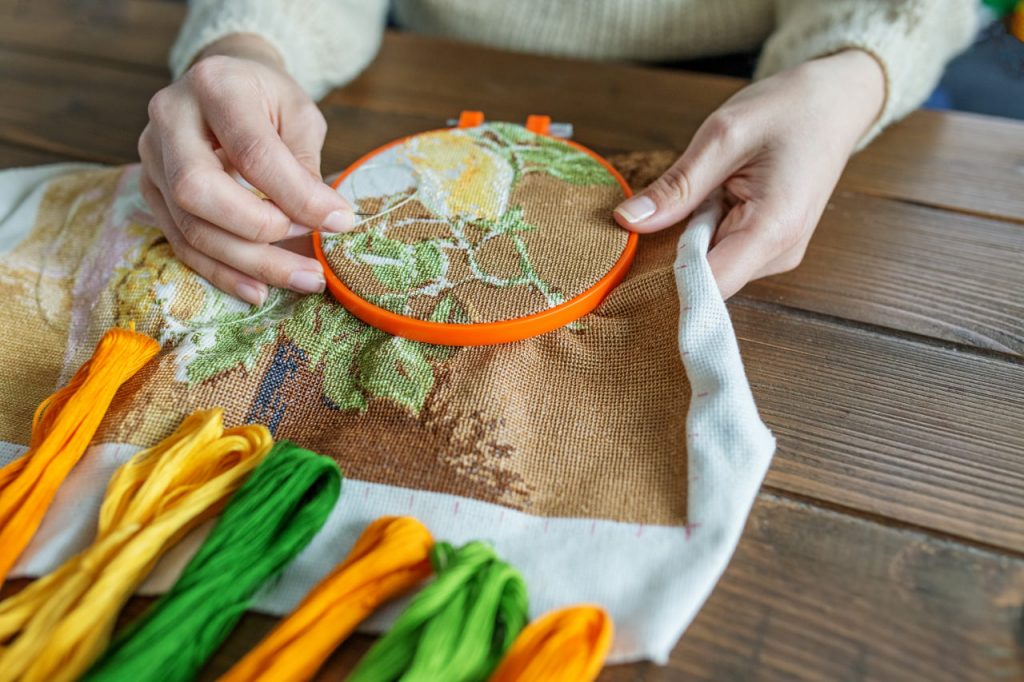Silk thread painting is an ancient art form with deep cultural roots, but its evolution is far from static. While the traditional designs — floral motifs, landscapes, animals — remain beloved and revered, contemporary artists are breathing new life into the medium. This fusion of tradition with modern expression opens up a world of possibilities for artists, offering a creative path that honors the past while embracing the future.
Roots in Ancient Traditions
The origins of silk thread painting date back to ancient China, where artists used silk as a delicate medium for embroidery, often in religious or ceremonial art. The designs were intricate, the threads shimmering in the light, and the subjects mostly symbolic — flowers, birds, and mythological creatures.
In Japan, silk embroidery also played a significant role in art and textiles, often seen in traditional garments and scroll paintings. These methods were passed down through generations, creating a rich legacy of craftsmanship that continues to be revered today.
Yet, despite its long history, silk thread painting isn’t just about preserving the past. It’s about drawing from it, taking what works, and adapting it to the modern world. The practice of creating delicate and precise art with thread connects us to centuries of creativity, but it is also a contemporary method of expression that reflects today’s world.
Modern Interpretation: Bold Designs and Innovation
Today, silk thread painting is no longer confined to just classical motifs. Contemporary artists have embraced the freedom to explore new themes, unusual designs, and bold color palettes. What was once a tradition bound by strict guidelines is now a playground for personal expression.
Artists are using silk to explore:
- Abstract compositions, where the thread itself is the primary medium of expression.
- Portraiture, creating stunning, textural representations of the human face.
- Non-traditional subjects, like urban landscapes, futuristic designs, or surreal imagery, taking inspiration from both the natural world and modern technology.
For many, this evolution is not just about creating something new — it’s about finding personal meaning in the art. Silk thread painting allows for a deep emotional connection to the subject, whether it’s a traditional flower or an abstract swirl of color. The act of creating becomes an opportunity for introspection, meditation, and even social commentary.
Reimagining Color and Texture
One of the most exciting aspects of modern silk thread painting is how artists are playing with color and texture. In traditional works, the colors were often limited to what was available in the region or in nature. Now, artists have access to a wider range of vibrant silk threads in every possible hue, allowing for more adventurous, dynamic palettes.
Moreover, silk itself — with its inherent sheen — brings a tactile dimension to modern art. The way light shifts on the surface of the fabric creates movement and depth, transforming static images into dynamic, living pieces of art.
Some artists are even experimenting with mixed media, incorporating other materials like beads, stones, or metallic threads into their works. These additions can create surprising effects, from dazzling highlights to textured layers, making each piece feel alive and ever-changing.
A Bridge Between the Old and the New
Despite its modern reinvention, silk thread painting still holds the weight of its historical significance. It’s a technique that honors patience, craftsmanship, and the meticulous nature of creating something by hand. At the same time, it offers endless possibilities for innovation and self-expression.
Whether you’re drawn to the traditional aspects or more contemporary interpretations, silk thread painting offers a balance between history and the present — a living art form that continues to evolve, inspire, and connect artists across generations.
